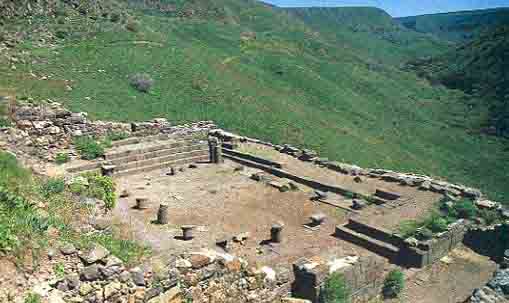Image Details

Danny Syon, courtesy Gamla Excavations
The oldest synagogue found in ancient Israel served the people of Gamla from the late first century B.C.E. until its destruction by the Romans in 67 C.E. Three rows of steplike benches, built of well-dressed basalt ashlars, and the remains of a rectangle of columns border the unpaved center of the synagogue. The columns supported a wooden roof that burned during the fall of Gamla. Circular basalt drums formed the columns, except for the columns at the four corners, which have a heart-shaped cross-section, as if two columns had met at the corner. Although excavators found no specifically Jewish artifacts or symbols in the synagogue, the presence of an adjacent mikveh (ritual bath) and the public nature of the building led to its identification as a synagogue. The white material on the stones is modern mortar used to hold the restored rocks together.
